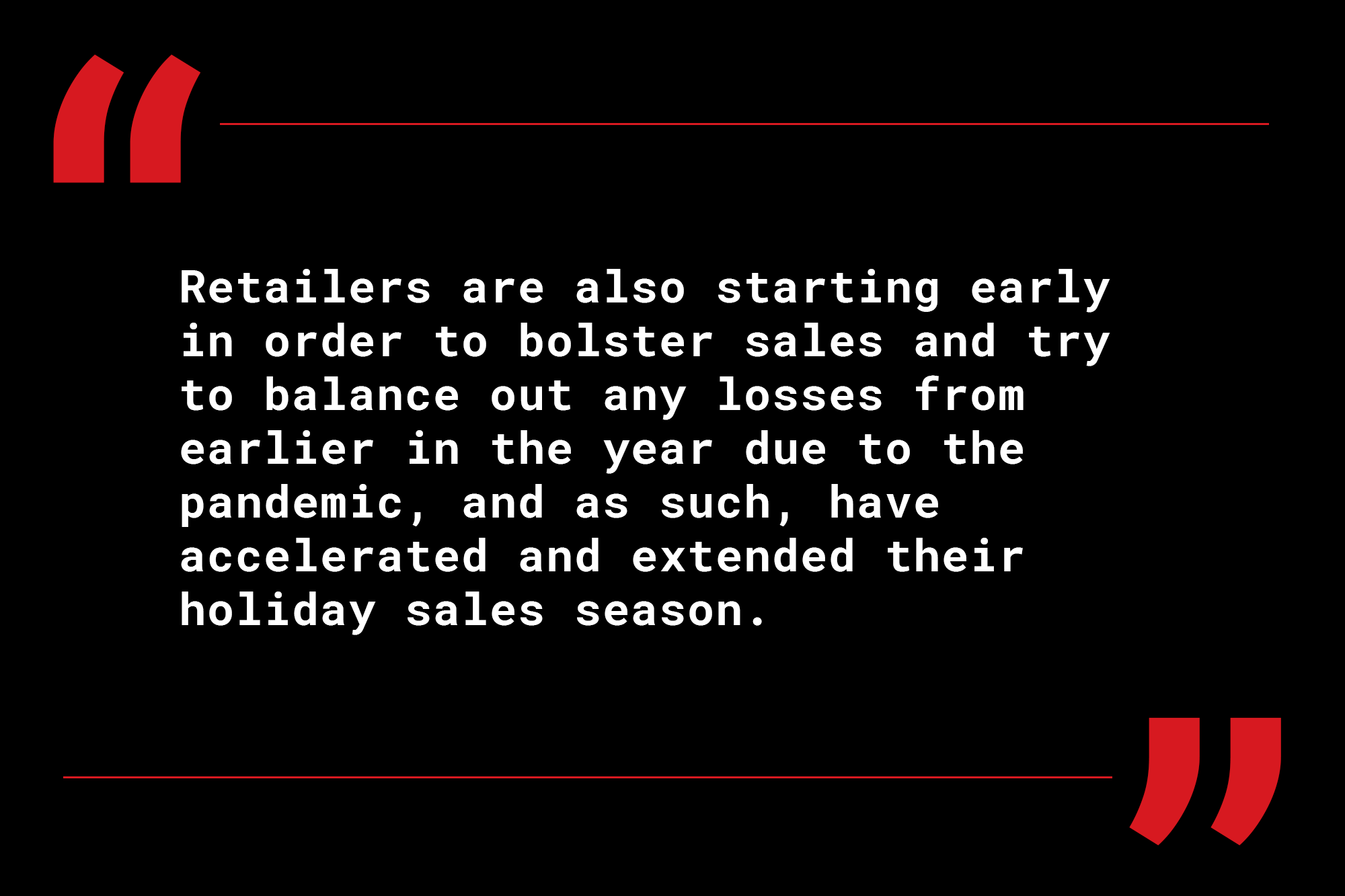November Is the New December
You probably have that neighbor who has already put up the Christmas Tree. You’re already starting to hear holiday music on the radio. And we’ve become bombarded with holiday ads that started in October. As we approach the end of 2020, people are looking ahead to hope, and are grasping for those feel-good vibes that the holiday season brings.
So what does this mean for how the holiday shopping season will look? Retailers are also starting early in order to bolster sales and try to balance out any losses from earlier in the year due to the pandemic, and as such, have accelerated and extended their holiday sales season. This is also an attempt to curb any delays on deliveries, and avoid an overwhelming and unsustainable demand that would break or delay their production lines.
While a lot of Americans have dealt with lost wages and some economic tightening, holiday spending is expected to increase from last year by 1.9%, according to the International Council of Shopping Centers. And that shopping is already underway, and was kicked off by Amazon pushing their Prime Day to October (instead of July) which generated $10.4 billion in sales – up by $3 billion since 2019’s two-day event. In essence that sales number is actually still growing from the event – by having it in October, it has created the 75-day holiday season instead of the typical 30-day season that is kicked off with Black Friday.
Not surprisingly, Forbes predicts that the holiday gifts exchanged this season will be centered around relationships, self-care, and the home. While there will still be some traditional gifts like clothes, jewelry, and electronics, the majority of gifts will be more applicable to our lives in 2020 – home gym and office equipment, future travel vouchers, streaming service subscriptions, athleisure clothing, and home décor to name a few examples.
The pandemic has created more online consumers – with shoppers who may not have been as familiar or as frequent with online shopping, it has shifted transactions to take place online. A trend that has been happening for years, but has increased dramatically in these last 9 months. In a poll conducted globally by Salesforce, as much as 61% of people plan to adopt online shopping as a regular practice after the pandemic. Another trend that was emerging pre-pandemic, albeit a little more subtly, was a heightened awareness of businesses’ ethics and values and how it has impacted consumer behavior. Results from the same poll performed by Salesforce revealed the following (published in Digital Commerce 360):
“71% of consumers said they pay closer attention to companies’ ethics than they did a year ago and 61% said they stopped buying from a company because its values did not align with theirs. Likewise, 75% of business buyers said vendors’ ethics increasingly factor into their purchasing decisions. 90% of consumers surveyed say how a company acts during a crisis reveals its trustworthiness. 51% of consumers trust a company more because of its response to this year’s crisis and 31% trust a company less for the same reason.”

People care where their money goes more than ever. With some families having less of it to spend, coupled with the recent Black Lives Movement underscoring the inequities and racism in this country, people want to see and be a part of making a difference and change with what they have to give. It goes beyond the product and lands on the people behind these businesses. And this will be a lasting trend in consumer behavior that will certainly go through the holiday shopping season and well beyond the pandemic.
2020’s overall holiday spending is expected to grow slightly this year to $1.15 trillion. According to the above, with 51% of consumers using their spending power to influence change, there is hope that with all these purchases a shift towards equality can start to happen.




